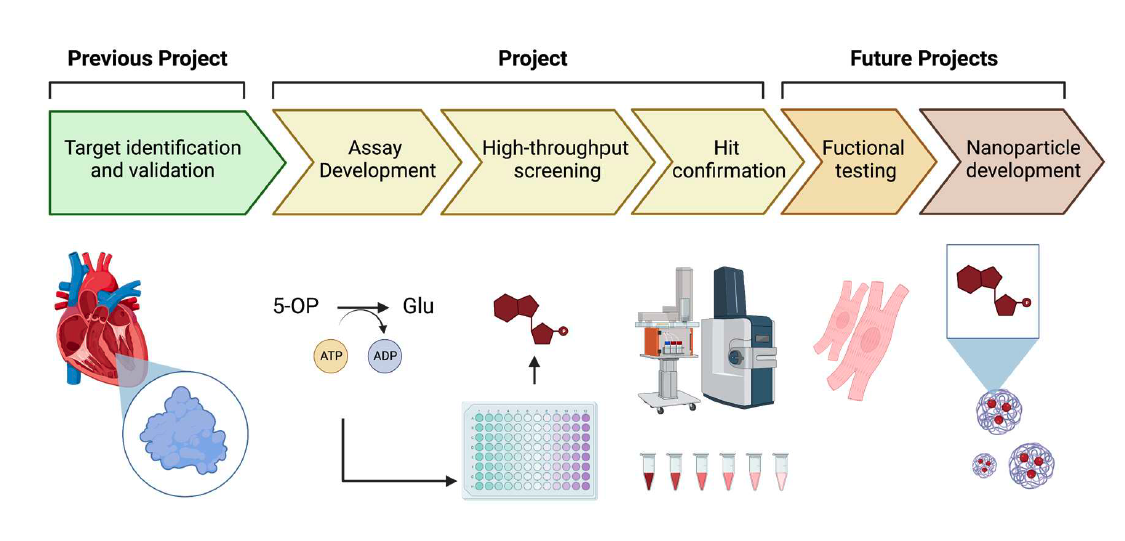Targeting oxidative stress: In search of new compounds to treat heart failure
The experimental cardiology department of the UMCG, alongside the University of Groningen andPivot Park Screening Centre, established a collaboration to develop a high throughput method to identify new compounds that promote the protective activity of 5-oxoprolinase (OPLAH).
New approaches are needed to treat heart failure; treating oxidative stress in the heart might improve the lives of patients suffering from it. This project aimed to develop a new therapeutic strategy for patients with heart failure by targeting OPLAH, a novel pathway with implications for the clinical worsening of heart failure. In this project, we first produced recombinant OPLAH enzyme efficiently. Later, we established an activity assay to measure the conversion of 5-oxoproline to glutamate using a highly reliable method (LC-MS/MS). Right after, we showed that the newly produced recombinant OPLAH was active by detecting glutamate concentration by means of the above mentioned method. Subsequently, we used recombinant OPLAH to develop an assay method for 5-oxoprolinase activity by employing a luminescence-based technique that measures the protein's utilisation of ATP. Then, a set containing 1280 FDA-approved compounds was analysed. The results showed the presence of one enhancer.
Previously, we showed that the absence of OPLAH is involved in the onset of heart failure in an animal model; animals also showed increased circulating levels of 5-oxoproline. In addition, patients with heart failure have elevated levels of 5-oxoproline. Evidence indicates that OPLAH plays a relevant role in glutathione regulation by converting toxic 5-oxoproline into glutamate.Therefore, this project sought to find drug-like compounds to improve OPLAH activity.
The discovered compound underwent additional investigation to determine the robustness of the findings. We confirmed the binding affinity between the identified compound and recombinantOPLAH. We also observed an increased glutamate conversion from 5-oxoproline in response to the compound's increased availability. We hope this finding to be translated into a new family of potential therapeutics in settings where 5-oxoproline is harmful, like in heart failure.




